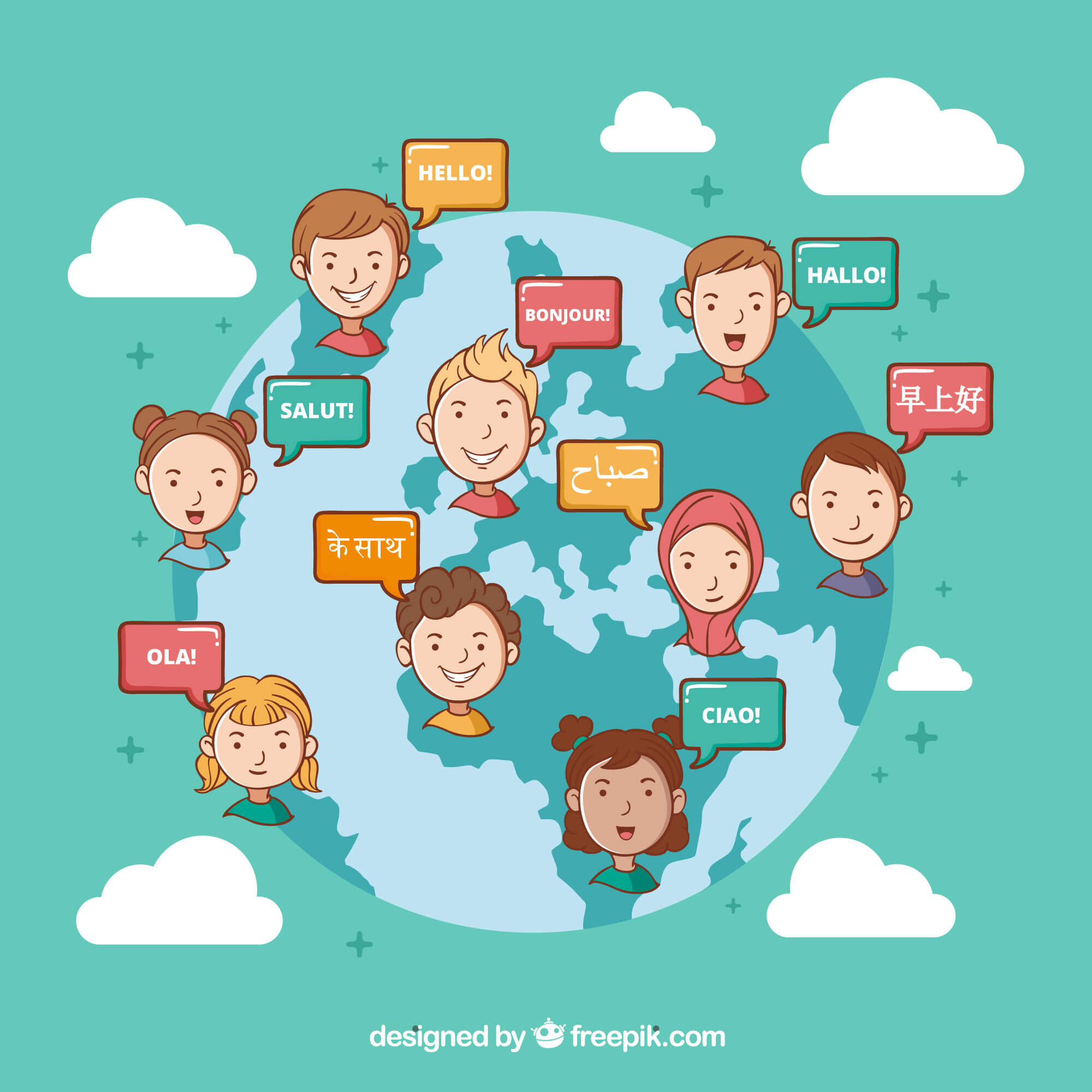Discourse refers to communication within a specific context, while language is the system of communication using symbols and rules.
Language, as we know it, serves as a powerful tool for conveying meaning, expressing thoughts and ideas, and facilitating interaction with others. Discourse, on the other hand, involves the practical use of language in specific contexts to construct and convey meaning effectively.
Linguistic analysis plays a crucial role in deciphering the intricate relationship between discourse and language. By examining language use within communicative contexts, we gain profound insights into speech acts, pragmatics, and sociolinguistics.
Throughout this article, we will highlight the key differences between discourse and language and delve into their respective roles in shaping social reality, power dynamics, and social identities. We will also examine the various applications of discourse analysis and language in different fields, from media analysis to interactional sociolinguistics.
Key Takeaways:
- Discourse and language are distinct but interconnected concepts.
- Language serves as a means of communication, while discourse refers to its use in specific social contexts.
- Linguistic analysis contributes to our understanding of speech acts, pragmatics, and sociolinguistics.
- Discourse plays a crucial role in constructing social realities, power dynamics, and social identities.
- Discourse analysis and language analysis find diverse applications in fields such as media analysis and interactional sociolinguistics.

Language Vs Discourse
Language is the way we express thoughts and emotions, while discourse is how language is used in different contexts to convey meaning and reflect social dynamics. Language shapes our cultural beliefs and social positions, influencing how we interact with others based on factors like gender, race, or social class.
Discourse goes beyond individual words to include broader context and shared meanings within a community. It actively shapes social identities and power dynamics, revealing how language constructs social realities and influences social change. Understanding this relationship helps us critically examine language’s role in shaping our social world.
A visual representation of language and discourse intersecting to shape social reality.
What is Discourse?

Discourse analysis examines how language, including text, images, and sounds, constructs meaning within social contexts. It looks beyond individual words to understand broader patterns of language use.
Discourse reflects social practices, values, and beliefs, shaping social reality and power dynamics. By analyzing discourse, we uncover underlying ideologies and power relations, understanding how language both reflects and constructs society. Different interpretations of discourse can influence how individuals perceive and respond to it, highlighting its role in shaping perspectives and reinforcing or challenging power structures.
Discourse in Linguistics and Other Fields
Discourse analysis is a versatile field applied across various academic and professional areas like linguistics, sociology, anthropology, psychology, media studies, and cultural studies. In linguistics, it helps understand how language is structured and used in different social settings, revealing insights into social identities, power dynamics, and cultural beliefs.
Outside linguistics, discourse analysis explores how discourses are created and perceived in specific contexts. For instance, in media studies, it dissects how media messages are formed, interpreted, and distributed, unraveling underlying power structures. Overall, discourse analysis is a vital tool for unraveling how language interacts with social contexts, power dynamics, and the construction of meaning in our society.
| Key Aspects of Discourse Analysis | Examples |
|---|---|
| Study of language in social context | Analyzing how political speeches construct and convey ideologies |
| Exploration of power dynamics | Examining how media discourses influence public opinion and shape social norms |
| Focus on both form and use of language | Analyzing the linguistic devices used in advertising to persuade consumers |
| Examination of discursive strategies | Studying how marginalized groups use language to resist and challenge dominant discourses |
Language and Discourse
Discourse analysis is a powerful tool for studying how language is used in specific situations to convey meaning. It helps us understand how language reflects and influences social and cultural beliefs, as well as power dynamics. Language isn’t neutral but is deeply connected to social power.
Through discourse analysis, we can explore how language shapes narratives and social interactions. By studying language in its social context, we can uncover hidden meanings and power structures. Language isn’t just a tool for communication; it’s also a way to exercise and maintain social power. Discourse analysis reveals how language can uphold or challenge dominant ideologies and cultural values, seen in political speeches and media discourse. This analysis is essential for researchers and linguists aiming to understand how language impacts our society and culture.
| Language and Discourse | Insights revealed through Discourse Analysis |
|---|---|
| Language as a mechanism of power | Uncovering hidden power dynamics in communication |
| Cultural attitudes and ideologies | Examining language to reveal underlying cultural values |
| Political discourse | Understanding strategic language use to manipulate public opinion |
| Media discourse | Identifying cultural biases and ideologies in media representations |
Through discourse analysis, we gain a deeper understanding of how language is not just a means of communication but also a reflection of the social power dynamics and cultural attitudes that shape our world. By examining language in context, we can uncover the ideologies and power structures that are deeply embedded within our everyday communication.
Scope of Analysis
When it comes to analyzing language, both discourse analysis and conversation analysis have their areas of focus. Discourse analysis, with its broader scope, allows for the examination of various forms of communication, including written texts, speeches, and media content. On the other hand, conversation analysis specifically delves into the analysis of spoken conversation, particularly in face-to-face interactions.
Discourse analysis explores the ways in which language is used in different contexts to construct and convey meaning, while conversation analysis zooms in on the intricacies of spoken talk, examining the structure, dynamics, and patterns within conversations.
While both approaches contribute to our understanding of language, they offer unique perspectives on different forms of communication. The table below highlights the key distinctions:
| Discourse Analysis | Conversation Analysis |
|---|---|
| Analyzes various forms of communication | Focuses on spoken conversation |
| Examines written texts, speeches, media content, etc. | Analyzes face-to-face interactions |
| Explores the construction and conveyance of meaning | Examines structure, dynamics, and patterns within conversations |
By understanding the distinct scopes of discourse analysis and conversation analysis, we can gain deeper insights into the forms of communication and how language functions within them.
Key Differences
In the realm of language analysis, discourse analysis and conversation analysis are two distinct approaches that differ in their scope, research questions, and data collection methods. However, they also share common principles and find applications in various fields.
Scope
Discourse analysis has a broader scope and can encompass the analysis of various forms of communication, including written texts, speeches, and media content. On the other hand, conversation analysis focuses specifically on the analysis of spoken conversation, particularly in face-to-face interactions.
Research Questions
Discourse analysis is concerned with understanding how language is used in social contexts to construct and convey meaning, as well as how it reflects or shapes social and cultural attitudes. It explores the power dynamics, cultural ideologies, and power structures imbedded in language use. Conversation analysis, on the other hand, examines the principles and practices of interaction, such as turn-taking, repair, and sequencing of actions, focusing on the organization and production of talk in everyday conversations.
Data Collection
When it comes to data collection, discourse analysis often involves the collection and analysis of a wide range of texts and multimodal materials. This includes written documents, audio recordings, and visual imagery. Conversation analysis, however, places emphasis on capturing and analyzing naturalistic conversations through audio or video recordings to capture the interactive and sequential nature of talk.
Common Ground
Despite their differences, both discourse analysis and conversation analysis are grounded in similar principles. They both emphasize the importance of contextual understanding, empirical analysis, and an anti-realistic approach to language analysis. Moreover, they both aim to uncover the deeper meanings embedded within language use and reveal the intricate dynamics of communication in different social settings.
Applications
These approaches have applications in various fields. Discourse analysis is commonly used in media analysis to examine the construction of meaning and power dynamics in media texts. It also finds application in organizational communication, studying how language influences power relations within workplaces. Conversation analysis has found its place in interactional sociolinguistics, unraveling the intricacies and norms of everyday conversations in different sociocultural contexts.
| Discourse Analysis | Conversation Analysis |
|---|---|
| Broad scope: analyzes various forms of communication | Focused on spoken conversation |
| Explores language use in social and cultural contexts | Examines the organization and production of talk |
| Collects and analyzes written texts, speeches, and media content | Captures and analyzes naturalistic conversations |
| Emphasizes contextual understanding, empirical analysis, and anti-realism | Shares similar principles with discourse analysis |
| Applications in media analysis and organizational communication | Applications in interactional sociolinguistics |
What’s the difference between ‘story’ and ‘discourse’?
A story tells a sequence of events, while discourse is about how those events are framed and presented. Discourse gives different meanings to things shown in texts and can affect the story’s content by manipulating, leaving out details, or considering the context.
Stories are like narratives with a beginning, middle, and end, aiming to engage and entertain the audience. On the other hand, discourse is about how these events are portrayed, attaching significance to them and shaping the audience’s understanding. Language is key in forming discourse, as it influences how the story is interpreted and can highlight certain aspects while ignoring others. Manipulation in discourse happens through selective language use, leaving out details, or emphasizing certain perspectives, all influenced by the context in which the discourse is presented. Understanding the relationship between story and discourse helps us analyze texts critically and uncover hidden influences.
Language and Power
Language holds immense power to influence people and societies, shaping attitudes and behaviors. Whether spoken or written, it can evoke emotions, control opinions, and achieve specific goals. Skilled communicators, such as politicians and influencers, can sway public opinion and inspire action through language, shaping societal norms and values.
Effective communication to large audiences gives individuals significant influence in shaping public opinion. Politicians and public figures can use language strategically to unite people, inspire change, or promote their agendas. However, language manipulation can also distort truth and mold narratives to fit certain agendas, especially through media platforms where language shapes public perception and reinforces existing power dynamics.
The Power of Language in Society
- Language creates cultural narratives that shape social norms and ideologies.
- It influences how individuals perceive themselves and others, constructing social identities and fostering stereotypes.
- Language can reinforce power dynamics, perpetuating inequalities and marginalizing certain groups.
- It plays a fundamental role in shaping public opinion, maintaining the status quo, and influencing responses to social issues or challenges.
By recognizing the power embedded within language, we can become more critical consumers of information, aware of the potential for manipulation and storytelling. By examining the language used in various contexts, we can better understand its influence on society and work towards creating a more equitable and inclusive linguistic environment.
Language in Society
Language, especially in the media, holds significant influence in shaping societal norms and perceptions. Through strategic language choices, media outlets can evoke emotions, reinforce stereotypes, and impact how individuals perceive law enforcement. By framing stories in particular ways, the media can manipulate public opinion and maintain existing power structures.
The portrayal of certain groups in the media can perpetuate stereotypes, leading to further marginalization within society. Language used by the media reflects and reinforces societal power dynamics, either challenging or upholding existing hierarchies. Everyday interactions also contribute to this, as language choices reflect social rules and expectations, shaping norms and reinforcing power imbalances.
The Influence of Language
- Language shapes and reflects societal values and norms
- Language in media influences public opinion and behaviors
- Language perpetuates stereotypes and power imbalances
- Social rules are reinforced or challenged through language
- Language evokes emotions and impacts responses to authority
Understanding the role of language in society is crucial for promoting social justice, inclusivity, and equality. By critically examining the language used in media and everyday interactions, we can challenge harmful narratives and work towards a more equitable society.
Stories Matter
Qualitative research is crucial for understanding how stories and language influence society. It involves examining stories closely to uncover how language is used and how media shapes narratives. Researchers analyze written and spoken language to understand how it shapes perspectives and maintains power dynamics.
Discourse analysis is a key part of qualitative research, focusing on how language influences public opinion and perpetuates societal norms. By studying the relationship between stories and language power, qualitative research reveals how narratives are created, used, and spread through the media. This helps us understand how language shapes cultural attitudes and reinforces ideologies, particularly those held by influential individuals or groups.
Conclusion
Discourse analysis and conversation analysis are two methods used to study language, each offering unique insights into human communication. Discourse analysis looks at how language creates meaning in different contexts, including text, images, and sounds. It helps us understand how language reflects social norms, shapes identities, and influences power dynamics.
Conversation analysis, on the other hand, focuses on spoken interaction, especially in face-to-face conversations. It examines how people structure and sequence their conversations, revealing how meaning is coordinated in real-time situations. By combining discourse and conversation analysis, we gain a deeper understanding of language’s complexities and its impact on society, helping us navigate the intricacies of human communication more effectively.
FAQ
What is the difference between discourse and language?
Language is a system of communication that allows us to convey meaning and interact with others, while discourse refers to the way language is used in specific contexts to construct and convey meaning.
How does language shape social reality?
Language constructs and represents social identities, groups, and issues, and conveys and reinforces social norms and values. It is deeply intertwined with social power relations.
What is discourse analysis?
Discourse analysis is the study of how language is used in specific contexts to construct and convey meaning, and how it reflects or shapes social and cultural attitudes.
How do discourse and language relate to power dynamics?
Discourse is shaped by and shapes social identities, relationships, and power dynamics. Language can be used strategically to influence attitudes and behaviors, evoke emotions, and exert power.
How does discourse analysis differ from conversation analysis?
Discourse analysis has a broader scope and can analyze various communication types, including written texts, speeches, and media content. Conversation analysis focuses on the analysis of spoken conversation in face-to-face interactions.
What are the key differences between discourse analysis and conversation analysis?
Discourse analysis and conversation analysis differ in their scope, research questions, and data collection methods. However, they share common principles such as contextual understanding, empirical analysis, and anti-realism.
What is the difference between ‘story’ and ‘discourse’?
A story refers to a set of chronological events, while discourse refers to how the story is framed and presented. Discourses are the different meanings given to phenomena as represented in texts.
How does language exert power in society?
Language is used in society through media to maintain and reinforce stereotypes, power dynamics, and social rules. It can shape public opinion, maintain the status quo, and influence responses to law enforcement.
How is discourse analysis relevant to qualitative research?
Qualitative research investigates how language is used, framed, and presented in various contexts such as business, politics, and media. Discourse analysis and language power are important aspects of qualitative research, exploring how language promotes stereotypes, maintains power, or justifies behaviors.
How do discourse analysis and conversation analysis contribute to our understanding of human communication?
Discourse analysis reveals the power of language in diverse contexts, while conversation analysis unravels the intricacies of spoken interaction. These approaches enrich the field of language analysis and enhance our understanding of how language shapes our social world.
Source Links
- https://thelingwist.net/language-and-discourse/
- https://medium.com/@reading_group/discourse-analysis-vs-conversation-analysis-unveiling-the-dynamics-of-language-analysis-3e42dd819eca
- https://www.futurelearn.com/info/courses/why-experience-matters/0/steps/45498
Image Credits
Featured Image By – pressfoto on Freepik
Image 1 By – pch.vector on Freepik
Image 2 By – Freepik








